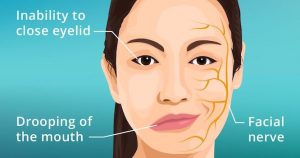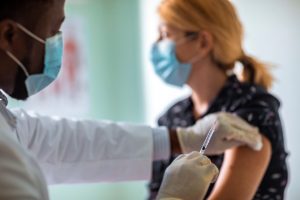Imagine waking up one morning and something doesn’t feel right with your face. One eye appears to be wider than the other, and one corner of your mouth is drooping low. Throughout the day, you’re unable to close your eyes at the same time, affecting your vision. You struggle to eat and drink and can’t make proper facial expressions such as smiling. Overall, you spend most of your time feeling insecure about your face. This was what I went through when I was diagnosed with Bell’s Palsy last month.
Bell’s Palsy is partial facial paralysis – the loss of muscle function on the face. This is due to inflammation or damage to the 7th cranial nerve, known as the facial nerve, which controls facial muscle movements. Impairment to the facial nerve is often caused by a viral infection such as a cold or ear infection.

Image: Flickr.com
Interestingly, there are public concerns that vaccination treatments for COVID-19 may also be linked to the cause of this facial condition.
Recent Case Studies
Four participants in the Moderna Phase 3 clinical trial developed Bell’s Palsy after receiving the vaccine. In addition, four participants in the Pzifer-BioNTech study also developed Bell’s Palsy. Both trials each had 30,000-40,000 participants overall.
Similar concerns were brought up years ago when patients who received the influenza vaccine reported developing Bell’s Palsy. A 2020 study assessed the number of patients who received the influenza vaccine between January 2015-October 2019 and found that 250 cases of facial paralysis were reported after the vaccination.
So, is Bell’s Palsy linked to vaccines?
Although further studies are recommended, researchers say the association between getting the vaccine and developing Bell’s Palsy is less likely to be related. University of California, Los Angeles’ (UCLA) assistant professor of neurology, Jason D. Hinman, MD, PhD, stated that the reported cases of Bell’s Palsy during the clinical trials are representative of the population, concluding that the risks of getting Bell’s Palsy is the same before and after getting vaccinated.

Image: Getty Images
“The normal incidence of Bell’s palsy is roughly 20 people out of 100,000. The Pfizer study examined 38,000 patients, so four cases would be within the normal observed incidence of Bell’s palsy.” Dr. Hinman, 2020.
Ultimately, the benefits of vaccination outweighs the risks.
Although common treatments for Bell’s Palsy include steroid injections and anti-inflammatory medication like Prednisone, it can go away on its own without treatment. Side effects related to vaccines are often temporary.
Overall, it’s encouraged to go get your shot.
“Any vaccine can cause side effects. For the most part these are minor and go away within a few days… vaccines are continually monitored for safety, and like any medication, vaccines can cause side effects. However, a decision not to immunize a child also involves risk and could put the child and others who come into contact with him or her at risk of contracting a potentially deadly disease.” The Centers for Disease Control and Prevention, 2020.
– Tina Huynh

3 responses to “Bell’s Palsy from Vaccinations: Is it worth the shot?”